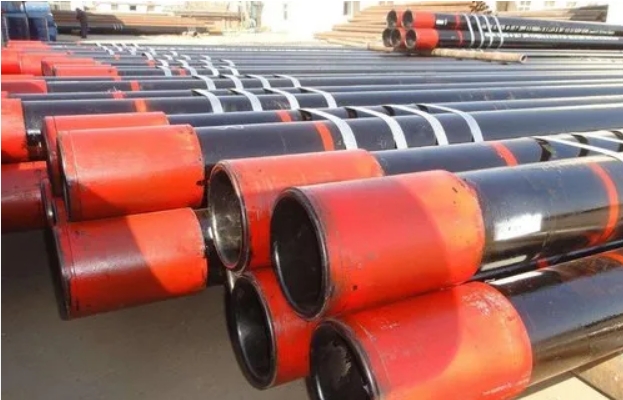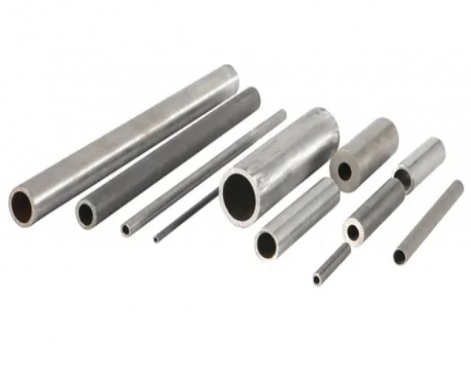1. Steel well casing pipes cannot circulate after being installed.
(1) The back pressure valve is blocked
①Treatment measures
Immediately perforate near the choke ring, restore circulation, and then cement. Cementing pressure can be measured to leave a cement plug, which will solidify after pressure.
②Preventive measures
Prevent gloves, brushes and other small objects from falling into the well. When running casing, a dedicated person must check the casing one by one. There should be no objects in the steel casing.

(2) Circulation is blocked due to well collapse or sand blockage
Treatment measures
After running the casing, it is found that the well has collapsed or is blocked by sand. After the pump is turned on, the pump pressure rises and the drilling fluid only enters but never returns. It is impossible to pull out the casing. Different remedial measures can only be taken according to the downhole conditions.
① If the leakage layer is in the upper soft stratum, the pump pressure is not too high, and there is a large absorption capacity, cement can be injected directly. If the leakage layer is in a medium-hard formation, there is still a certain amount of absorption, but the pump pressure is higher, and cement slurry can also be squeezed in, but the thickening time and initial setting time of the cement slurry should be appropriately extended.
② If the leaking layer is the production layer, squeezing cement will seriously damage the production layer. If the absorption capacity of the formation is very small and the conditions for squeezing cement are not available, then the wellhead has to be fixed, perforations are made at appropriate locations above the production layer below the collapsed section, and casing is run into the casing with a small drill pipe or tubing with a packer. In the process, the packer is set and under the perforation position. After the circulation is smooth, cement slurry is injected to seal the production layer.
Precaution
① When running steel well casing pipes, the drilling fluid must be adjusted and processed before the well is circulated, and the drilling fluid must be circulated thoroughly to remove sand accumulation, consolidate the well wall, and the return speed meets the return speed requirements during cementing. If there are any problems downhole, there is no need to run casing Cementing.
② It is necessary to grasp the collapse law of the formation. The collapse of some formations has obvious periodicity. Casing cementing should be done during the stable period of the formation.
③ Before tripping out the casing, special attention should be paid to filling the drilling fluid, and it should be filled continuously.
④ The shorter the time from the completion of drilling to the beginning of casing running, the better. It is not allowed to run casing directly without going through the well after electrical surveying and well wall coring.
⑤ Some wells have many centralizers and scrapers connected to the casing string, and a lot of filter cake accumulates during the casing running process. If these filter cakes are located in the small well diameter section and form a blockage, the circulation will be blocked. Therefore, the number of centralizers should be designed reasonably and the mud scrapers should be used with caution.
⑥When running casing, the drilling fluid must be filled regularly according to technical requirements to prevent the well from collapsing due to the collapse of the pressure valve.
2. The casing or back pressure valve is collapsed
During the casing running process, the main reason for the collapse of the casing or back pressure valve is insufficient filling of drilling fluid.
Treatment measures
① During various operations before and after cementing, the safety of the casing must be considered. No matter what the reason is for the casing to collapse, it is difficult to remedy it.
② If only the back pressure valve is destroyed, cementing can be carried out by manually measuring the amount of drilling fluid.
Precaution
① Fill the drilling fluid regularly according to the design requirements.
② When cementing in formations with salt rock creep, the crushing strength of the casing should be designed according to the creep stress of the creep layer.
③ The casing in the creep section must be evenly filled with cement to prevent channeling.
④ The bailout depth during oil testing operations is strictly limited to the allowable range of casing anti-crush strength and must not be exceeded.
⑤ When it is necessary to lower the packer to squeeze cement, the packer should be at least 35m away from the perforation section.
3. Casing leakage
Treatment measures
Locate the leakage location and use ultra-fine cement to squeeze out the leakage. Ultrafine cement is finely ground cement with an average particle size of 6 μm and a maximum particle size of 15 μm, which is 1/5~1/7 of the standard cement particle size. The ultrafine cement components used for squeeze injection operations are 20% to 30% finely ground cement and 70% to 80% hydraulic slag.
Precaution
① All downhole casings should be hydraulically pressure tested one by one, and flaw detection should be carried out.
② Use sealing grease or adhesive for thread grease.
③Tighten tightly according to the specified torque.
④ Gas wells must use air-tight casing.
⑤The casing cement slurry of each layer of the gas well should be returned to the ground.
⑥During shut-in pressure testing or well control operations, the shut-in pressure cannot exceed 80% of the internal pressure resistance strength of the weakest casing.
⑦ If a turntable is used to drill in technical casing, anti-wear measures should be taken for the casing.
(1) The back pressure valve is blocked
①Treatment measures
Immediately perforate near the choke ring, restore circulation, and then cement. Cementing pressure can be measured to leave a cement plug, which will solidify after pressure.
②Preventive measures
Prevent gloves, brushes and other small objects from falling into the well. When running casing, a dedicated person must check the casing one by one. There should be no objects in the steel casing.

(2) Circulation is blocked due to well collapse or sand blockage
Treatment measures
After running the casing, it is found that the well has collapsed or is blocked by sand. After the pump is turned on, the pump pressure rises and the drilling fluid only enters but never returns. It is impossible to pull out the casing. Different remedial measures can only be taken according to the downhole conditions.
① If the leakage layer is in the upper soft stratum, the pump pressure is not too high, and there is a large absorption capacity, cement can be injected directly. If the leakage layer is in a medium-hard formation, there is still a certain amount of absorption, but the pump pressure is higher, and cement slurry can also be squeezed in, but the thickening time and initial setting time of the cement slurry should be appropriately extended.
② If the leaking layer is the production layer, squeezing cement will seriously damage the production layer. If the absorption capacity of the formation is very small and the conditions for squeezing cement are not available, then the wellhead has to be fixed, perforations are made at appropriate locations above the production layer below the collapsed section, and casing is run into the casing with a small drill pipe or tubing with a packer. In the process, the packer is set and under the perforation position. After the circulation is smooth, cement slurry is injected to seal the production layer.
Precaution
① When running steel well casing pipes, the drilling fluid must be adjusted and processed before the well is circulated, and the drilling fluid must be circulated thoroughly to remove sand accumulation, consolidate the well wall, and the return speed meets the return speed requirements during cementing. If there are any problems downhole, there is no need to run casing Cementing.
② It is necessary to grasp the collapse law of the formation. The collapse of some formations has obvious periodicity. Casing cementing should be done during the stable period of the formation.
③ Before tripping out the casing, special attention should be paid to filling the drilling fluid, and it should be filled continuously.
④ The shorter the time from the completion of drilling to the beginning of casing running, the better. It is not allowed to run casing directly without going through the well after electrical surveying and well wall coring.
⑤ Some wells have many centralizers and scrapers connected to the casing string, and a lot of filter cake accumulates during the casing running process. If these filter cakes are located in the small well diameter section and form a blockage, the circulation will be blocked. Therefore, the number of centralizers should be designed reasonably and the mud scrapers should be used with caution.
⑥When running casing, the drilling fluid must be filled regularly according to technical requirements to prevent the well from collapsing due to the collapse of the pressure valve.
2. The casing or back pressure valve is collapsed
During the casing running process, the main reason for the collapse of the casing or back pressure valve is insufficient filling of drilling fluid.
Treatment measures
① During various operations before and after cementing, the safety of the casing must be considered. No matter what the reason is for the casing to collapse, it is difficult to remedy it.
② If only the back pressure valve is destroyed, cementing can be carried out by manually measuring the amount of drilling fluid.
Precaution
① Fill the drilling fluid regularly according to the design requirements.
② When cementing in formations with salt rock creep, the crushing strength of the casing should be designed according to the creep stress of the creep layer.
③ The casing in the creep section must be evenly filled with cement to prevent channeling.
④ The bailout depth during oil testing operations is strictly limited to the allowable range of casing anti-crush strength and must not be exceeded.
⑤ When it is necessary to lower the packer to squeeze cement, the packer should be at least 35m away from the perforation section.
3. Casing leakage
Treatment measures
Locate the leakage location and use ultra-fine cement to squeeze out the leakage. Ultrafine cement is finely ground cement with an average particle size of 6 μm and a maximum particle size of 15 μm, which is 1/5~1/7 of the standard cement particle size. The ultrafine cement components used for squeeze injection operations are 20% to 30% finely ground cement and 70% to 80% hydraulic slag.
Precaution
① All downhole casings should be hydraulically pressure tested one by one, and flaw detection should be carried out.
② Use sealing grease or adhesive for thread grease.
③Tighten tightly according to the specified torque.
④ Gas wells must use air-tight casing.
⑤The casing cement slurry of each layer of the gas well should be returned to the ground.
⑥During shut-in pressure testing or well control operations, the shut-in pressure cannot exceed 80% of the internal pressure resistance strength of the weakest casing.
⑦ If a turntable is used to drill in technical casing, anti-wear measures should be taken for the casing.









